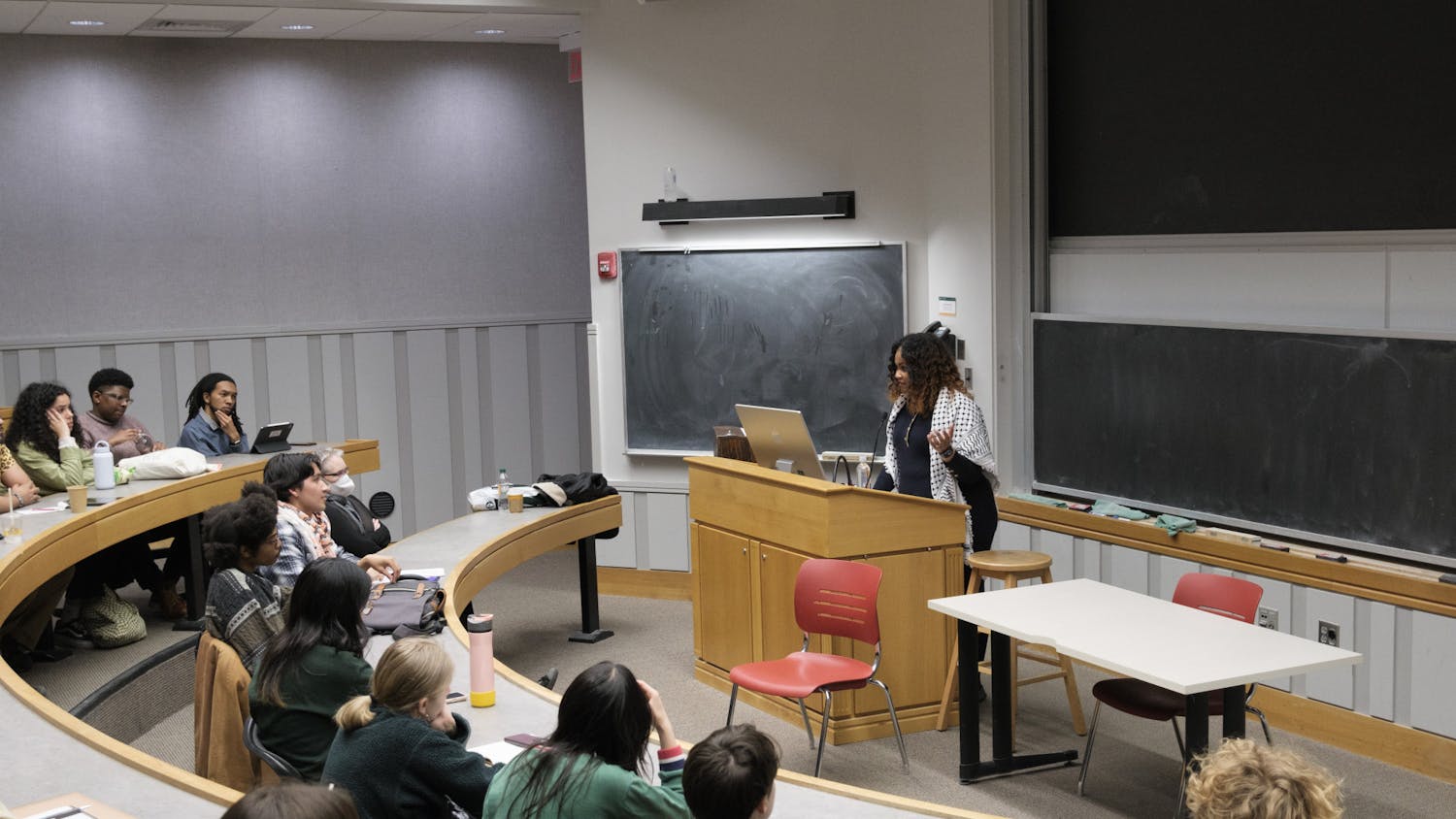Dartmouth has hired Goldman Sachs consultants to explore options for constructing a new power plant. The College is also hoping to transition its steam heating system to a more efficient hot water loop system, said executive vice president Rick Mills.
According to associate vice president of facilities operations and management Frank Roberts, the power plant next to the Hood Museum of Art, which was built in 1898, produces virtually all of the main campus’ heat and approximately 20 percent of its electricity consumption. The College is currently looking at potential locations for the new plant, which will replace nearly all of that energy production, Mills said.
These energy infrastructure improvements are all part of Dartmouth’s sustainability goals that College President Phil Hanlon outlined on April 15, 2017. By 2025, the College hopes to obtain 50 percent of its energy supply from renewables, and 100 percent by 2050.
Goldman Sachs will aid the College in the search for private companies to help build the new plant, Mills said. This tactic of finding private companies to build expensive projects, known as a public-private partnership, is increasingly common when universities pursue a project outside their zone of expertise, he said. A partnership of this type will free up “a finite amount of capital capacity that Dartmouth has to use on our more core academic missions like science buildings or undergraduate residencies — things that feel like they are very much the essence of Dartmouth,” Mills said.
Mills said that the College is additionally using Goldman Sachs to explore partners to build new graduate housing, in which the College would give a private company rights to build new apartments in Sachem Village.
This public-private partnership could take any number of directions in regard to the new power plant from the private company owning and operating the plant and selling the energy it produces to the College operating the plant entirely on its own, Mills said.
Goldman Sachs is working with the College to decide which plan to pursue, a process that will take two to three years, Mills said. The timeline for a new power plant is still unknown, he added.
Once the new power plant is operational, Mills said that the College is unsure of what will become of the current plant, which is in “prime real estate.” They are considering options ranging from the demolition of the plant and building something new in its place to turning it into a gallery modeled after the Tate Modern in London, which is located in a former power plant, he said.
Mills said he expects that the new plant will use biomass, a renewable energy source, instead of the heating oil currently used. However, the College is open to new ideas from potential partners.
The College is considering using wood chips as its biomass energy source, according to Mills. Since burning wood chips releases much less energy than oil by volume of material burned, the plant would require a much larger storage capacity for wood chips than the current plant has for oil, Mills explained.
Environmental studies professor Andrew Friedland said wood chips should not be the College’s final goal in its search for renewable energies. Instead, they should be used for a period of time as a transition to “true, non-depletable renewables like wind and solar,” he said.
Friedland said that burning wood chips actually releases more carbon dioxide into the atmosphere than burning oil. The difference, he said, is that some of the carbon dioxide will be drawn back from the atmosphere as the trees start growing in the place where the trees were cut.
“When you cut down trees and turn them into wood chips, you’ve left this open area of the forest which can regrow new trees and, in theory, draw the carbon dioxide, which you’ve released into the atmosphere when you burn the wood, back down into some living plants,” he explained.
Calling wood chips “the lesser of two evils,” Friedland said that they are better than fossil fuels because no part of the extraction or priming of oil offsets the carbon dioxide released from burning it.
Building a new power plant is not the only project Dartmouth is pursuing to make its energy infrastructure more sustainable. The College is also hoping to upgrade its steam system to a district hot water loop, which will circulate heated water in a far more insulated system, Mills said.
Currently, the campus currently uses a steam distribution energy system. While steam allows for a large transfer of heat, it is relatively inefficient, as a large amount of heat and energy is lost as steam travels through pipes underground, according to Mills.
A hot water loop will not only reduce losses of heat but also integrate the entire energy system. The current system can only add energy from the central power plant because steam is so hot and pressured, whereas the hot water loop would enable any building to add hot water to the loop for energy usage. This is beneficial because the College could, for example, be able to add solar panels to the roofs of buildings which would be able to easily add energy to the system.
Changing to a hot water system will also result in quieter radiators. Since steam is hot, the radiators get quite hot but only briefly and are cool most of the time. The radiator’s quick heating and cooling is what causes much of the noise, according to Mills.
With a hot water loop, radiators become less hot and operate more consistently at a more constant temperature, which should make radiators on campus much quieter, said Mills.
He added that the College will take care of its internal improvements rather than partnering with a private firm to upgrade the buildings.
Divest Dartmouth member Lily Zhang ’18 said that she is happy to see the College moving away from using fossil fuels. But, she added, the College’s energy usage “is not the whole picture of Dartmouth’s footprint in fossil fuels” because the College invests its endowment in fossil fuel companies.
The town of Hanover also has strong commitments to renewable energies. According to Hanover public works director Peter Kulbacki, the town has the same goal as Dartmouth to transition to 100 percent renewable energy by 2050.
He emphasized that it is important that the town meet its goals through methods that can be copied anywhere.
“The goal is really meaningless unless we do something that other communities can do,” Kulbacki said. “Not every town has a Dartmouth in it.”



